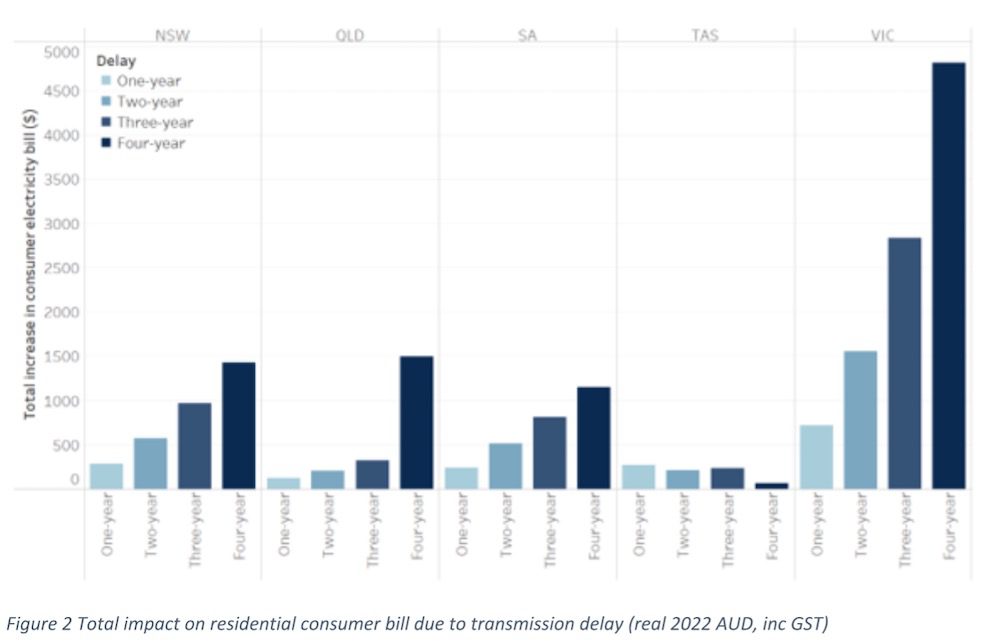After almost a decade of inaction, a new chapter has been opened on energy policy. The recent collaboration between federal, state and territory energy ministers, to establish a National Energy Transformation Partnership (NETP), is to be applauded.
The NETP has not only committed to an emissions objective that will fast-track Australia’s transition to net zero, but it has recognised the critical lack of transmission infrastructure that is fundamental to supporting renewables.
As part of the NETP, energy ministers have agreed to identify transmission projects of national significance to accelerate their timely delivery and ensure better community consultation.
They will also assess the workforce, supply chain and community needs associated with the pipeline of transmission, renewable energy, storage and industry development opportunities. This will inform domestic on-shoring opportunities, investment needs, identify supply chain risks, and community engagement needs to support a national action plan.
These commitments, while welcome, are long overdue. The construction of the transmission that forms the backbone of the National Energy Market (NEM) took nearly 50 years to build, starting in 1959 with the connection between Victoria and NSW to accommodate the Snowy Hydro Scheme. Basslink was the last major transmission investment, linking Tasmania and Victoria in 2005.
Building transmission lines is not cheap, quick, or low risk. Aside from sourcing the capital required, planning assessment, approvals and addressing environmental impacts take considerable time.
Undertaking the necessary stakeholder and community engagement for new easements and transmission lines also requires considerable resources and carries substantial risk.
However, the most significant roadblock to building the transmission needed to facilitate the transition to a low carbon electricity system is resolving who pays for it.
And the longer this stalemate on the question of public vs private investment continues, the more the transmission will ultimately cost consumers.
Nexa Advisory has released modelling by Endgame Economics providing evidence-based insights into the likely impact on consumers’ electricity bills (households and business) of delays to the required new electricity transmission upgrade and build (compared with the Integrated System Plan (ISP)).
The modelling shows that:
- A delay of even one year in delivering new transmission results in higher bills for consumers.
- As delays to the building of transmission get longer, the modelling demonstrates prices are higher and price spikes are more likely to occur more frequently.
- Tasmania would see a temporary fall in bills if the Marinus Link was delayed, due to over-supply of renewable electricity locally, but prices would rebound to higher levels once the link is constructed.
- The increase in the wholesale cost of electricity due to delays far outweighs any ‘saving’ from not building the transmission, because low-cost renewable electricity cannot then be utilised widely in the NEM.

- Victoria would be the most severely impacted because of its reliance on energy generation in NSW and Tasmania.
- The modelling shows a significant spike in prices if HVNI West and Marinus Link are delayed.

It is clear that we can no longer afford not to invest in transmission build. We need to move forward, across the country, in a concerted and coordinated way and the NETP is a step in the right direction. But, we need to get on with it. We are already behind schedule on most of the identified actionable projects of the ISP.
The federal government’s $20 billion ‘Rewiring the Nation’ policy package can remove key roadblocks and supercharge the transmission build, empower the state governments to deliver on their plans, ensure an orderly transition, and reduce the upward pressure on and volatility of electricity prices for consumers.
However, at Nexa would also like to see serious consideration given to government co-contribution models for actionable projects detailed in the 2022 Draft ISP, as well as rapid evolution of the current investment review process, and development of community engagement and benefits models that recognise the importance of this critical new transmission infrastructure to Australia’s future.
This should include:
- Expediting ISP priority projects by removing these projects from the out-of-date regulatory RiT-T process.
- Embedding a government/private co-funding arrangement to underpin the financing of new transmission as described in our Removing Transmission Roadblocks report.
- Funding appropriate payments to host landholders and communities (with an associated governance framework), to ensure social licence to build and operate transmission, and therefore remove the current approvals “drag” – this would be similar to that of the state-led renewable energy zones.
- Securing the critical supplies needed to build this important infrastructure in the global queue.
Our feet are to the fire on this. We need to get on with mobilising the Rewiring the Nation package to support investment in the renewables, storage and transmission needed to ensure ongoing affordable and reliable energy supply for Australian households and business.
Stephanie Bashir is a founder and principal of Nexa Advisory










